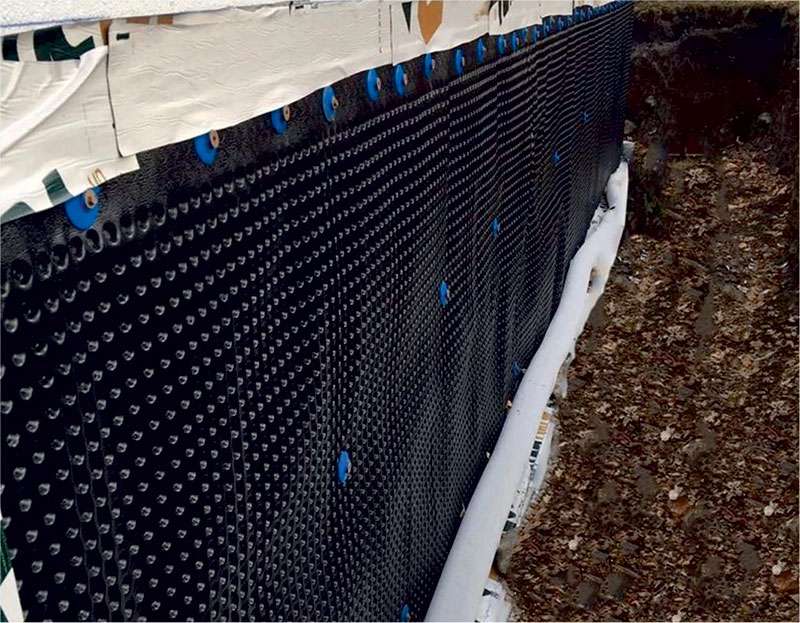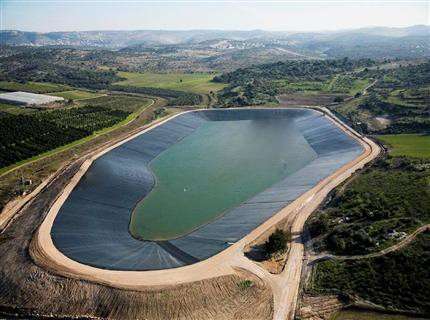
Blog

Jun 8,2023
An insight into the Drainage Board
A drainage board is a geosynthetic product used in landscaping and construction to improve soil drainage. It consists of a thin layer of plastic or other material placed on top of soil or surface to allow water to flow through it quickly and provide a barrier to prevent the ground from eroding or washing away simultaneously. Drainage boards are often used in areas with a high risk of water accumulating, such as in low-elevation regions or along the edges of buildings, to help prevent water damage and flooding. Drainage boards are essential to any building's foundation, as they help keep water away from the structure and avoid moisture damage.
There are several different types of drainage boards available that serve numerous purposes;
1: One type of drainage board is made from high-density polyethylene (HDPE) material. This type of drainage board is lightweight and conveniently installed, making it a popular choice for many contractors. It is also resistant to mold and rot and can withstand extreme temperatures.
2: Another kind of drainage board is made from a composite material, such as a combination of HDPE and polystyrene. This type of drainage board offers excellent moisture resistance and is durable and lightweight.
3: The third option is a drainage board made from a geosynthetic material, such as a geotextile fabric. This drainage board allows water to pass through, providing a barrier against soil erosion. It is often used in landscaping and earth retention.
4: Another type of drainage board commonly used in green roofs is vegetative or plant-based. This type of drainage board is made from a substrate specifically designed to support the growth of plants, such as moss or sedum. The plants help to absorb excess water and reduce the load on the drainage system.
5: Another selection is a drainage board with a built-in filter fabric. This type of drainage board has a material layer that helps filter out sediment and other debris, which can clog up the drainage system over time. This type of drainage board is advantageous in areas with high soil sediment levels.
6: The drainage board with a perforated top layer. This type of drainage board allows water to pass through the top layer and into the drainage system while providing a barrier to protect against soil erosion. This can be a good option for areas with high levels of water infiltration, as it allows for more efficient drainage.
Benefits Of Drainage Board
Some of the benefits of high-quality drainage boards that we can yield for landscaping and construction are as under:
Management Water Movement
Drainage boards are designed to manage and control the flow of water effectively. They can redirect excess moisture away from areas that can cause damage, like foundations, walls, and slopes. This can help reduce the risk of flooding and prevent erosion and landslides.
Reinforce The Soil
The corrugated layer of a drainage board provides structural support, which can help stabilize soil and prevent erosion. This is especially beneficial for landscaping on sloped or hilly terrain, where soil erosion is a common problem.
Versatility
Drainage boards are used in various applications, including retaining walls, green roofs, and gardens. They can also be cut to fit specific dimensions and shapes, making them a highly adaptable solution for various projects.
Cost-Effective
Drainage boards are a cost-effective solution for managing water flow and preventing erosion. Drainage boards are relatively easy to install, can be used in various settings, are easily cleaned with a hose or pressure washer, and do not require regular maintenance or upkeep, which can help save on labor and upkeep costs.
Environmentally Friendly
Drainage boards are a sustainable option for managing water flow and preventing erosion. They are made from porous materials that allow water to filter back into the soil rather than run off into bodies of water. This can help reduce the risk of water pollution and protect natural habitats.
Durability
Drainage boards are designed to withstand harsh weather conditions and resist UV radiation and extreme temperatures. They are a long-lasting solution providing adequate drainage and erosion control for many years.
Increase The Worth of Property
Drainage boards can be used in gardens, retaining walls, and green roofs. They can be covered with soil or landscaping materials, such as plants or stones, to create a visually appealing and functional space and make a property worth buying to potential buyers or renters.







